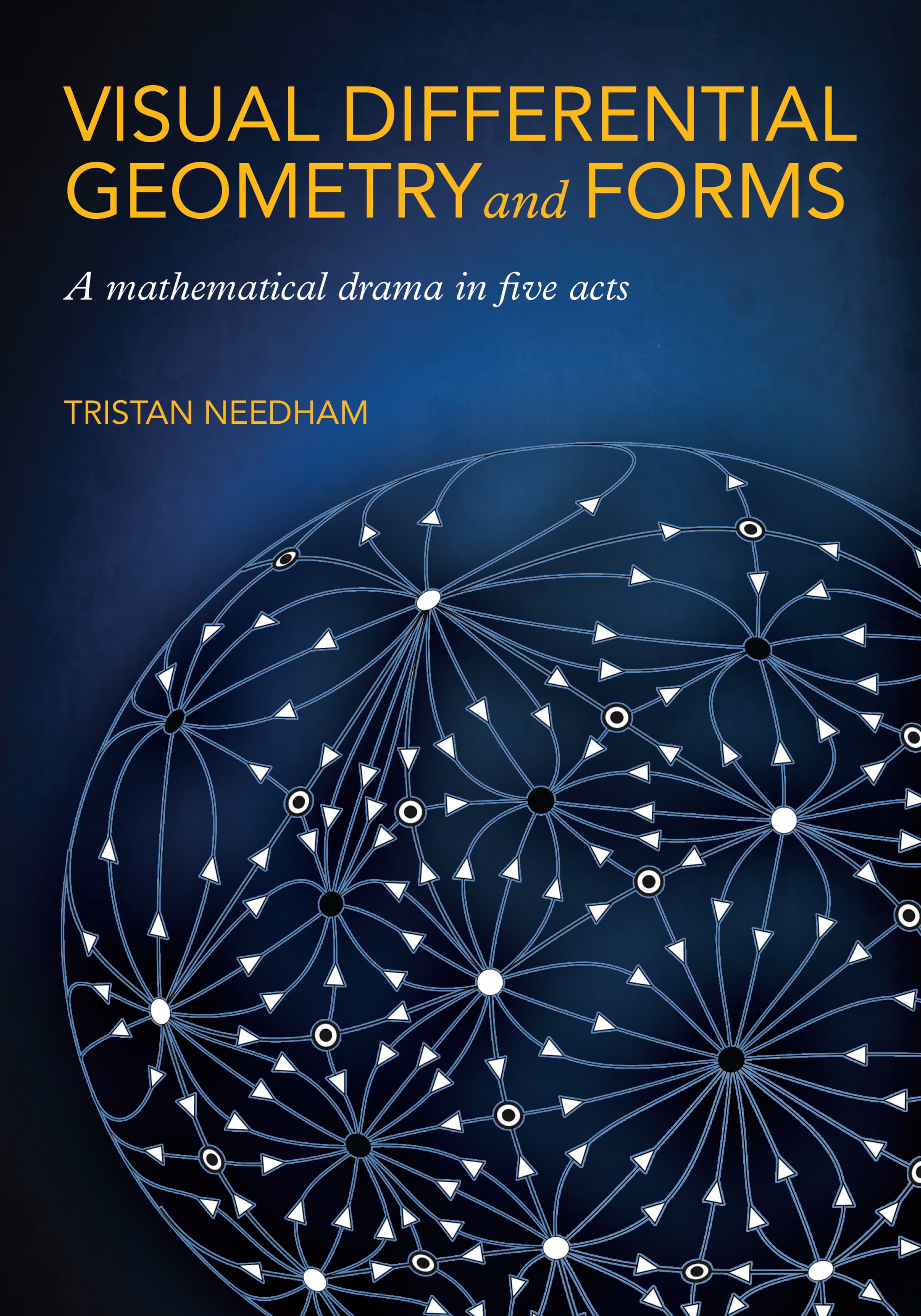All rights reserved.
Needham proposes to provide a truly geometric “visual” explication of differential geometry, and he succeeds brilliantly. I know of nothing like it in the literature. The only account of comparable richness of exposition is Spivak’s five-volume Comprehensive Introduction to Differential Geometry, which is, like all other texts, much more algebraic, and still much longer.
I’ve always loved geometric explanations. Needham’s geometric derivation of the derivative of is what I use in my Calculus book, but many of Needham’s geometric explanations were wonderfully new for me. For example, Needham describes with meticulously hand-labeled pictures of summer squash how you can find a geodesic on a surface by pressing on a thin piece of adhesive tape (see his Figure 1.11 below). His modest figures, without computer technology, pay high dividends in geometric content. In another example of insightful geometric perspective, Needham explains the large circumference of circles centered at a saddle point by how far your hands move if you wave your arms up and down as you spin around. And most geometric concepts are perfectly presented to prepare for the ones that follow. Needham could not, however, resist using a geometric intrinsic definition of Gauss curvature as “angular excess per unit area,” though it now takes most of the text for him to identify it with the usual, extrinsic definition as the product of the principal curvatures, which he uses in the statement of Gauss’s Theorema Egregium (which says that it actually is intrinsic).
As to whether his geometric explanations always qualify as proofs, Needham writes in the Prologue:
… let me concede, from the outset, that when I claim that an assertion is “proved,” it may be read as “proved beyond a reasonable doubt”!
Needham’s text covers material from high school geometry through advanced graduate courses, at leisure. Needham explains in the Prologue:
… I have made no attempt to write this book as a classroom textbook. … my primary goal has been to communicate a majestic and powerful subject to the reader as honestly and as lucidly as I am able, regardless of whether that reader is a tender neophyte, or a hardened expert.
And that’s exactly what he does. The writing style is magnificent, and the scholarship is impeccable. The treatment of general relativity, perhaps the most striking application of differential geometry, is splendid. By not writing a textbook, the author will not be adequately compensated financially for his great contribution, but Princeton University Press can be proud to continue its noble mission of publishing the best.
Like any perfectionist, Needham does have his eccentricities. His new symbol “is ultimately equal to” may well be an improvement on the usual use of limits, but it might be moved from its overly prominent place in the Prologue to a follow-up section on preliminaries. His replacement of “Figure 1.1” with “[1.1]” (in brackets without “Figure”) just makes the book harder to read.
In the third of his five “Acts,” on Curvature, there is too much for my taste on the curvature of curves (as in many texts). On the other hand, I miss the interpretation of curvature and mean curvature as the rate of change of length or area under smooth deformations.
In my opinion the final Act V on Forms does not belong in this book, which is already long, despite the value of Cartan’s moving frames. Needham himself writes:
… our aim is to make Forms accessible to the widest possible range of readers, even if their primary interest is not Differential Geometry.
So perhaps give them a separate nice little volume. Actually I think that Act V is not only an unnecessary distraction, but also of lower quality than the first four Acts. In my opinion, it would better start with something familiar, such as the kind of integrand that occurs in line integrals and Green’s Theorem, and explain it as a covector field. And I found it confusing the way Needham conflates covectors and covector fields. And I found the development too slow.
There are lots of nice exercises throughout, though no solutions. The index is very helpful.
Through it all flows a generous geometric spirit, a yearning after geometry fulfilled. This magnificent book, one of a kind, merits the close attention and tender appreciation of all true scholars and lovers of geometry.
Tristan Needham, Visual Differential Geometry and Forms. A Mathematical Drama in Five Acts, Princeton University Press, 2021, 584 pages, Hardback ISBN 978-0-6912-0369-0
Cite this article
Frank Morgan, Book review: “Visual Differential Geometry and Forms” by Tristan Needham. Eur. Math. Soc. Mag. 126 (2022), pp. 65–66
DOI 10.4171/MAG/110
